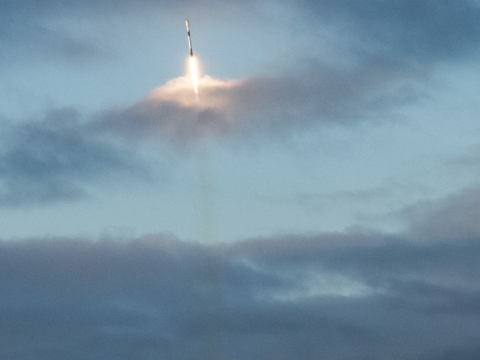Disruptive by Design: Shoot the Moon
Communicators can uniquely replicate the effects of satellite communications if they look to the past and once again use the Earth’s only organic satellite, the moon.
Satellites are the military communicator’s easy button. As long as the operating environment is permissive, communications planners can easily establish high bandwidth links that satisfy the demands of data-hungry commanders and their staffs. But this go-to solution is a hollow one, as any adversary that can contest the electromagnetic spectrum or the space domain can knock satellite communications out of the fight. Jamming, spoofing and other means of electronic warfare can render satellites ineffective, while missiles and lasers can destroy satellites from the Earth or from space.
In any potential conflict with a serious competitor, military planners must assume that satellite communications will be severely degraded or completely denied at the outset—and possibly throughout the duration. Consequently, communicators must be trained and proficient in establishing alternative links by which commanders can exert command and control of their combat forces. While I’ve previously written on the importance of high frequency communications in this regard, communicators can also uniquely replicate the effects of satellite communications if they look to the past and once again use the Earth’s only organic satellite, the moon. By once again becoming skilled in Earth-moon-Earth (EME) or so-called moon bounce techniques, military communicators can provide their commanders with the only satellite link that can’t be shot out of the sky.
EME is a radio technique that transmits radio waves from the Earth and reflects them off the moon’s surface to be received at another terrestrial location. Prior to EME, long-haul wireless communication was only possible through skywave transmission, bouncing signals off the ionosphere as is commonly executed with the high frequency band. The U.S. Army Signal Corps proved the concept via Project Diana in 1946, and the U.S. Navy refined the technique through the Communication Relay Project in the 1950s and 1960s. This culminated in the establishment of the Moon Relay system, which connected stations between Maryland and Hawaii. The establishment of artificial satellite systems in the late 1960s made the Moon Relay system obsolete.
But with the ever-increasing portfolio of means by which to target artificial satellites, EME is once again relevant, and urgently so. Given its size, the moon cannot be destroyed by current human intervention. Should the possibility of lunar destruction emerge in the future, the consequences would be so terrestrially catastrophic as to be on strategic parity with nuclear war. And while the individual beams of artificial satellites can be jammed, EME uses the very surface of the moon, highly complicating any attempt at jamming.
Further, EME can be cheap and flexible and poses few obstacles. Moon bounce is regularly executed by transmitting on a single Yagi antenna on as little as 100 watts of power. This technique continues to be employed by amateur radio operators across frequency bands ranging from 50 megahertz to 47 gigahertz. Users will experience a delay of under 3 seconds with each transmission, and the moon’s shape, surface and orbit will pose some challenges to link establishment and maintenance. But any operator with the finesse to implement high frequency communications is also capable of mastering EME.
Artificial satellites provide a phenomenal communications capability, but one that is increasingly vulnerable. Relying solely upon these links all but invites the enemy to target them. Military planners must be proactive in pursuing other links that can be relied upon when communications are contested. To prepare for the future, planners should look to the past—and shoot the moon in pursuit of victory.
Brian Kerg is a Marine Corps officer and writer. He is a nonresident fellow at Marine Corps University’s Brute Krulak Center for Innovation and Creativity and a student at the School of Advanced Warfighting. Follow or contact him on Twitter @BrianKerg.



Comments